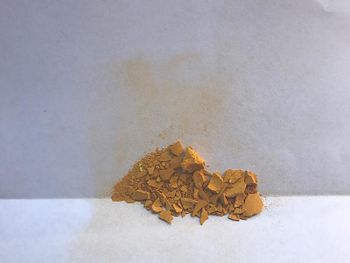Difference between revisions of "Lead picrate"
From Sciencemadness Wiki
| Line 96: | Line 96: | ||
| LD50 = | | LD50 = | ||
| LC50 = | | LC50 = | ||
| − | | MainHazards = | + | | MainHazards = Explosive, toxic, harmful for the enviornment |
| − | | NFPA-F = | + | | NFPA-F = 4 |
| − | | NFPA-H = | + | | NFPA-H = 4 |
| − | | NFPA-R = | + | | NFPA-R = 4 |
| − | | NFPA-S = | + | | NFPA-S = POI |
}} | }} | ||
| Section7 = {{Chembox Related | | Section7 = {{Chembox Related | ||
| Line 107: | Line 107: | ||
| OtherFunction = | | OtherFunction = | ||
| OtherFunction_label = | | OtherFunction_label = | ||
| − | | OtherCompounds = | + | | OtherCompounds = [[Picric acid]], [[Lead styphnate]], [[Lead(II) aide]] |
}} | }} | ||
}} | }} | ||
Revision as of 22:15, 14 February 2019

| |

| |
| Names | |
|---|---|
| IUPAC name
lead(2+);2,4,6-trinitrophenolate
| |
| Systematic IUPAC name
2,4-Dinitro-6-(oxo{[(2,4,6-trinitrophenoxy)-λ2-plumbanyl]oxy}ammonio)phenolate | |
| Identifiers | |
| Jmol-3D images | Image |
| |
| Properties | |
| C12H4N6O14Pb | |
| Molar mass | 663.4g/mol |
| Appearance | Orange, dense powder |
| Melting point | Detonates |
| Boiling point | Detonates |
| barely soluble in water at 20°C | |
| Hazards | |
| NFPA 704 | <imagemap>
Image:NFPA 704.svg|80px|alt=NFPA 704 four-colored diamond poly 300 0 450 150 300 300 150 150 Flammability code 4: Will rapidly or completely vaporize at normal atmospheric pressure and temperature, or is readily dispersed in air and will burn readily. Flash point below 23 °C (73 °F). E.g., propane poly 150 150 300 300 150 450 0 300 Health code 4: Very short exposure could cause death or major residual injury. E.g., VX gas poly 450 150 600 300 450 450 300 300 Reactivity code 4: Readily capable of detonation or explosive decomposition at normal temperatures and pressures. E.g., nitroglycerin poly 300 300 450 450 300 600 150 450 [[NFPA 704#White|]] desc none </imagemap> |
| Related compounds | |
| Related compounds
|
Picric acid, Lead styphnate, Lead(II) aide |
| Except where otherwise noted, data are given for materials in their standard state (at 25 °C [77 °F], 100 kPa). | |
| Infobox references | |
Categories:
- Chemical pages without CAS Registry Number
- Articles without EBI source
- Chemical pages without ChemSpiderID
- Chemical pages without DrugBank identifier
- Articles without KEGG source
- Articles without InChI source
- Articles without UNII source
- Articles with unknown NFPA 704 code
- Articles containing unverified chemical infoboxes